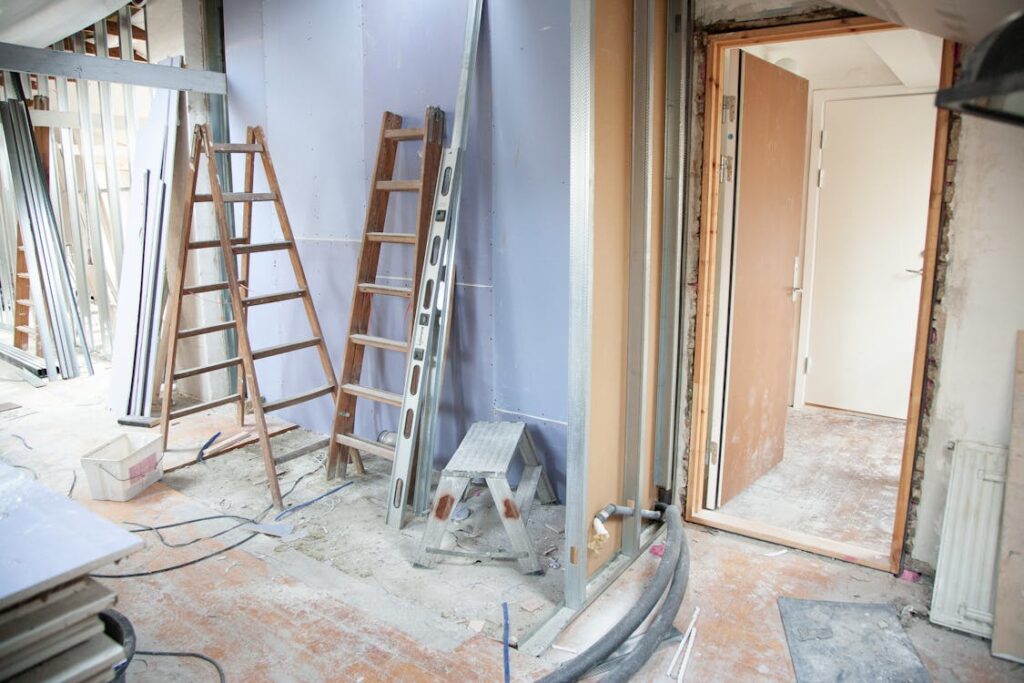
When planning a renovation or new build, knowing the right size of drywall to use is key to achieving a smooth, well-finished wall. Whether you’re constructing a new house or upgrading a room, drywall is often at the core of a project.
Now, drywall happens to be the most common interior wall surface across Canadian homes. With Canadian climate considerations, sustainability needs, and specific dimensions available on the market, choosing drywall for your interior walls requires a little know-how.
All that being said, let’s talk about what drywall sizes are available in Canada. We’ll also tell you how to choose the best fit for your project and why these choices matter.
What are the Standard Drywall Sizes in Canada?

In Canada, the standard drywall sheet dimensions are typically 4 feet by 8 feet. Similar drywall sheet dimensions are also seen in the US.
Other sizes are also available, depending on your needs. The thickness can vary, with common options being 1/2-inch and 5/8-inch. Each thickness has its own set of advantages based on the room and function within a house.
For instance, 1/2-inch drywall is often the standard for interior walls in most residential buildings. This size offers a balance of strength and ease of installation, making it ideal for areas without additional structural needs.
In contrast, 5/8-inch drywall is preferred in spaces where extra durability is necessary, such as in larger rooms or multi-family residences. Such sizes are used where soundproofing might be required. This thicker option can even serve as a fire-resistant barrier, which is especially important for high-traffic or multi-tenant buildings.
How Do You Choose the Right Drywall Size for Different Spaces?
Each room in a home comes with unique requirements, and choosing the right drywall size can help address those needs. Bedrooms, living rooms, and dining areas typically utilize 1/2-inch drywall, which is lightweight and easy to work with.
However, if you’re working on a ceiling, you may want to go with a lighter 3/8-inch option, which reduces strain on the ceiling structure.
For basements or bathrooms, where moisture is a common concern, a 5/8-inch, water-resistant drywall is often recommended. In addition to the standard drywall thickness, there are specific water-resistant materials designed to help combat mold growth. These mold-resistant panels are especially useful in high-humidity environments, where durability against moisture damage becomes essential.
What Impact Does the Canadian Climate Have on Drywall Choices?
Canada’s diverse climate can affect the durability of drywall. With cold winters and potentially humid summers, the materials used in a home’s construction need to withstand temperature and moisture fluctuations.
In northern regions with intense winters, drywall that’s prone to cracking in dry, cold air should be avoided. The same drywalls can be applicable to houses in places like Abbotsford.
In Abbotsford, the cool season lasts for over three months with an average daily high temperature below 49°F. For such weather conditions, why not opt for drywall made from sustainable materials? These can better withstand cold weather conditions without deteriorating over time while still being environmentally friendly.
Sustainability is an added consideration when selecting drywall. Many Canadian builders and homeowners now prioritize eco-friendly construction materials.
According to Devlin Drywall Contractors, drywall manufacturers offer products made from recycled materials that perform well and reduce the ecological footprint of your home.
By choosing sustainably sourced drywall, you’re ensuring the longevity of your walls and contributing to more environmentally friendly building practices in Canada.
How Does Drywall Thickness Influence Sustainability and Energy Efficiency?
Thicker drywall doesn’t just add to the stability of walls. It also improves insulation, which is a valuable feature in Canadian homes where keeping warmth in during winter and out during summer is essential.
A 5/8-inch drywall, for example, provides better thermal insulation than thinner options, reducing energy consumption for heating and cooling. It’s a small change that can lead to significant savings over time, both in terms of energy bills and environmental impact.
Choosing drywall with a focus on energy efficiency is beneficial to the environment and also creates a more comfortable interior. With well-insulated walls, rooms stay at more consistent temperatures, eliminating drafts or hot spots, and ultimately making the house feel cozier year-round.
Ultimately, getting the right drywall size is about balancing function, durability, and sustainability. By carefully considering the specific requirements of each room, you can create strong, long-lasting walls that meet your home’s needs.
Understanding the range of drywall options in Canada empowers you to make an informed choice. This ensures that your construction project looks great and is built with resilience in mind.
- 0shares
- Facebook0
- Pinterest0
- Twitter0



